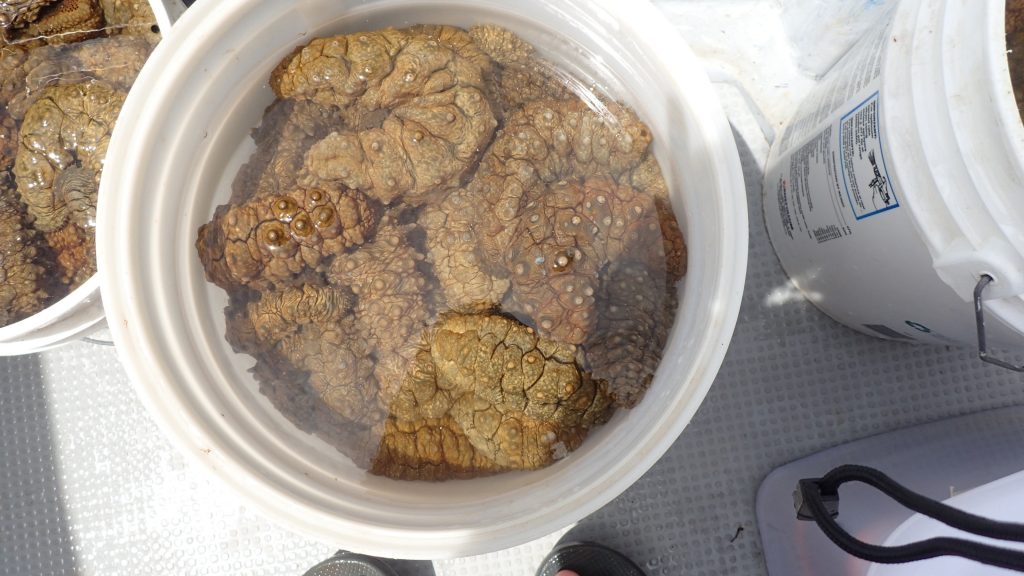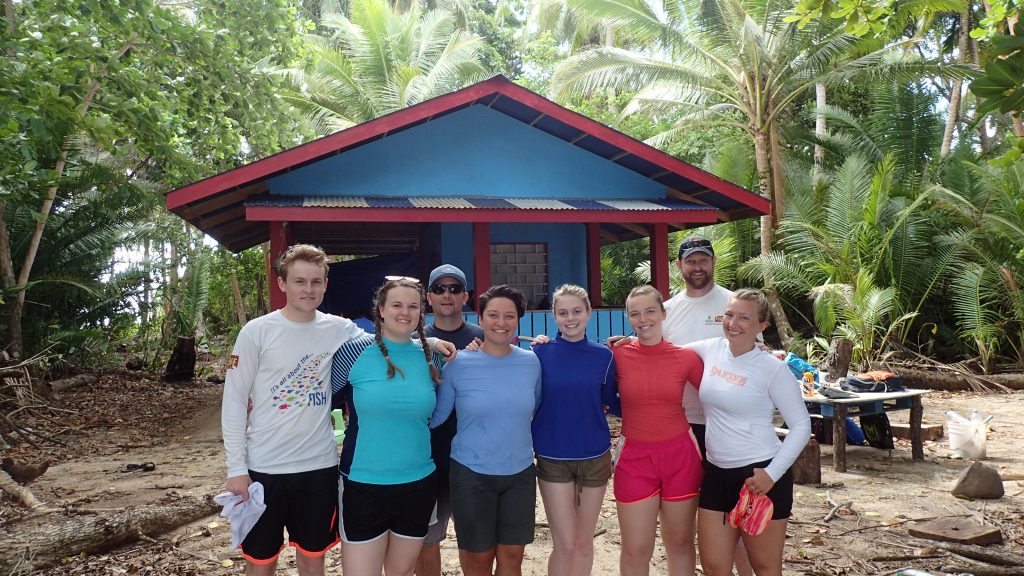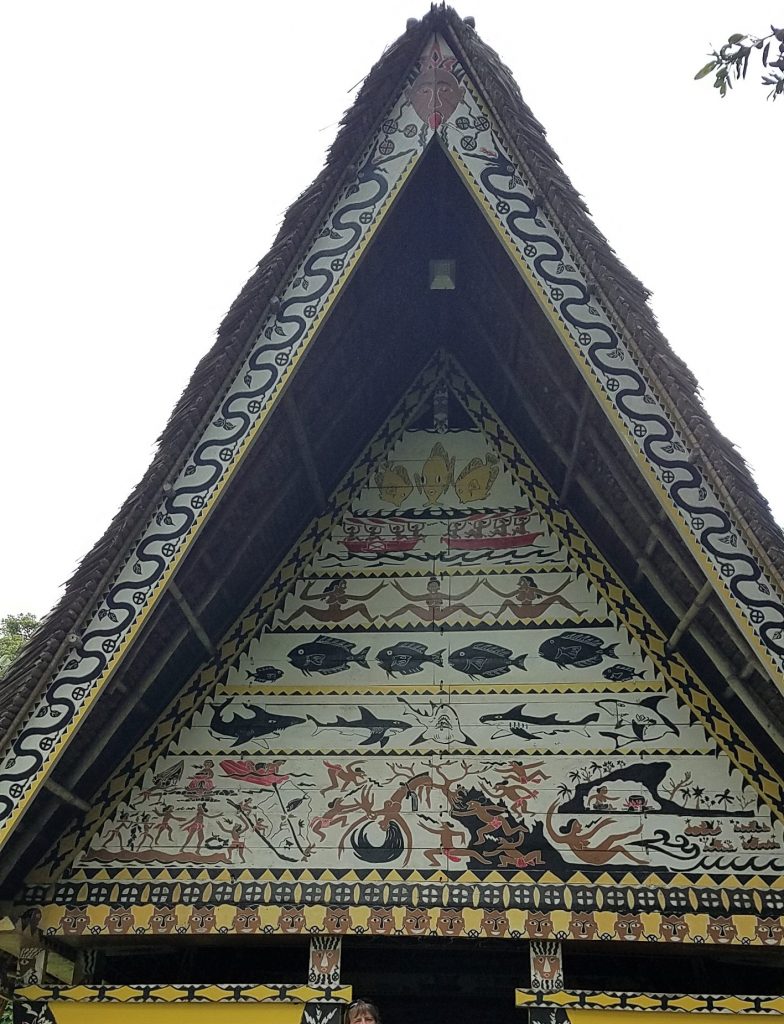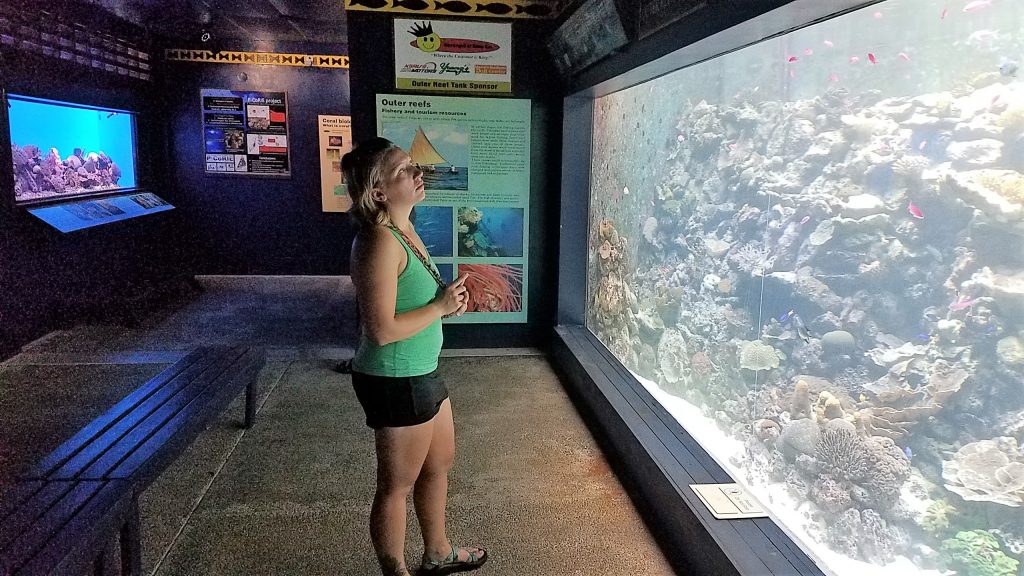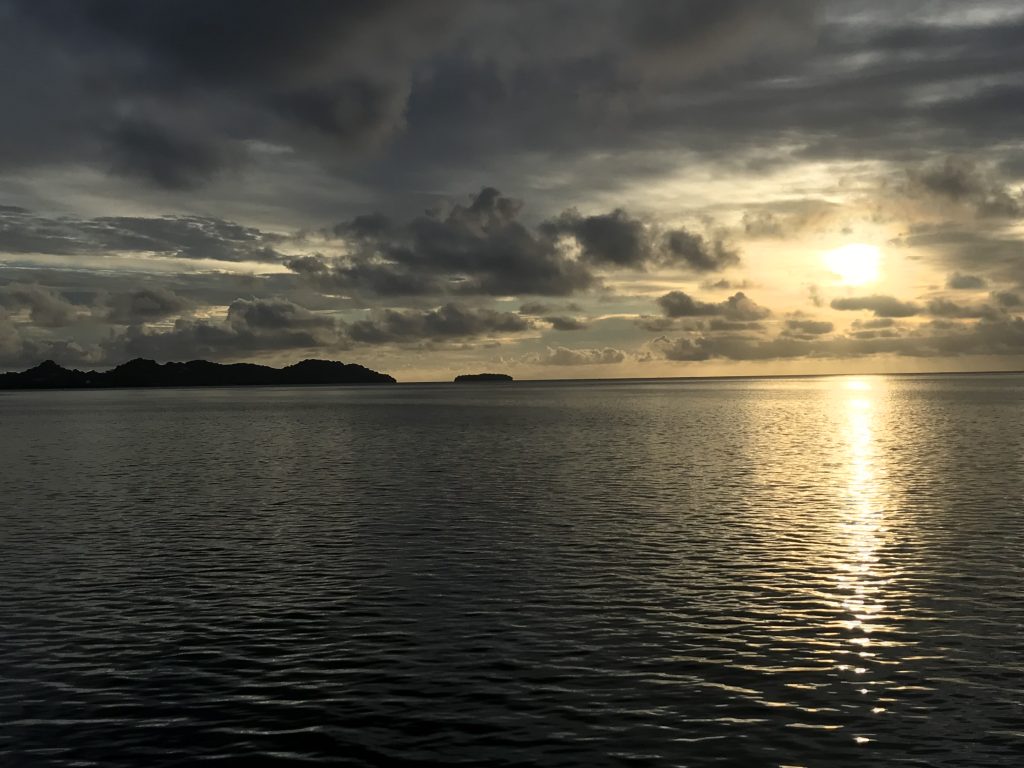Today we have officially kicked off the Oregon State University 2024 Ridge to Reef course! But before class started, some of our students have already had adventures in Palau.
Myles arrived a few days early and thus had some extra time to go diving. Booking two days with Sam’s Tours, a diving company recommended by Scott, he dove the Sandbar, Ulong Channel, and the Hafa Adei wreck the first day, then met up with Scott the second day to dive Blue Holes, Blue Corner, and German Channel. Blue Corner in particular was stunning, with enormous schools of Red-Tooth Triggerfish, various fusilier, and three different kinds of reef shark.


Iris, Megan and Katie hitched a ride with Bryan and Garrett around Palau where they saw the capitol building. They also stopped at Kuabes park, a beach in Ulimang, where they went hunting for shells. There were so many Hermit crabs and Ghost crabs!


Finally, Alaina and Donika started their trip with a snorkeling and kayaking trip through Nikko Bay with Paddling Palau, visiting amazing coral reefs, cathedral cave, and a marine lake!

After all our preclass adventures, it was time for the course to start. Our first outing was to the Belau National Museum. The museum gave an extensive history of Palau from first settlement, through years of colonization, to Palau today as an sovereign country.


We finished off the day with a lovely dinner from Chef Alina and presentation from Senior Naturalist Guide Mac with Paddling Palau, learning all about the ecotourism, conservation and research that Paddling Palau facilitates in the Rock Islands and beyond.


Today’s blog post was written by: Katie Matsuoka, Myles Tallmadge and Alaina Houser


